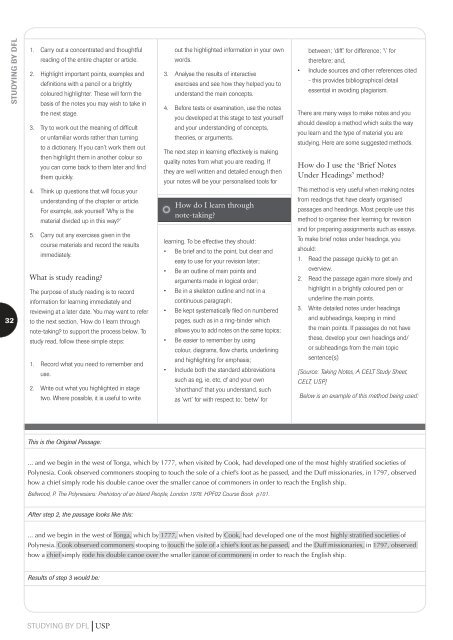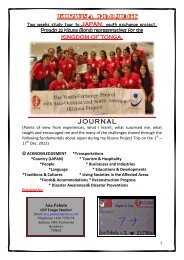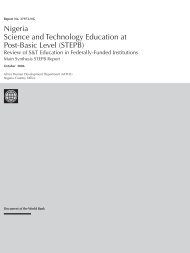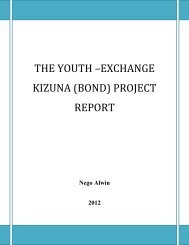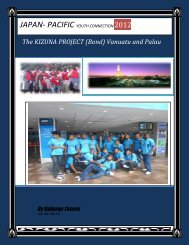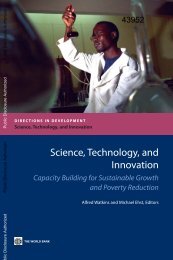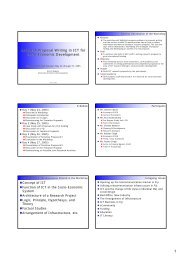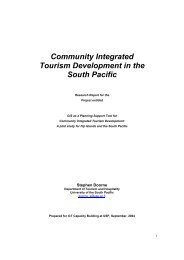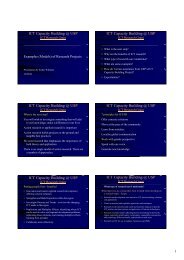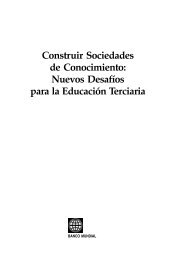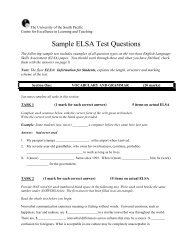our future, your future 2007 distance and flexible learning handbook
our future, your future 2007 distance and flexible learning handbook
our future, your future 2007 distance and flexible learning handbook
You also want an ePaper? Increase the reach of your titles
YUMPU automatically turns print PDFs into web optimized ePapers that Google loves.
STUDYING BY DFL<br />
32<br />
1. Carry out a concentrated <strong>and</strong> thoughtful<br />
reading of the entire chapter or article.<br />
2. Highlight important points, examples <strong>and</strong><br />
definitions with a pencil or a brightly<br />
col<strong>our</strong>ed highlighter. These will form the<br />
basis of the notes you may wish to take in<br />
the next stage.<br />
3. Try to work out the meaning of difficult<br />
or unfamiliar words rather than turning<br />
to a dictionary. If you can’t work them out<br />
then highlight them in another col<strong>our</strong> so<br />
you can come back to them later <strong>and</strong> find<br />
them quickly.<br />
4. Think up questions that will focus y<strong>our</strong><br />
underst<strong>and</strong>ing of the chapter or article.<br />
For example, ask y<strong>our</strong>self ‘Why is the<br />
material divided up in this way?’<br />
5. Carry out any exercises given in the<br />
c<strong>our</strong>se materials <strong>and</strong> record the results<br />
immediately.<br />
What is study reading?<br />
The purpose of study reading is to record<br />
information for <strong>learning</strong> immediately <strong>and</strong><br />
reviewing at a later date. You may want to refer<br />
to the next section, ‘How do I learn through<br />
note-taking? to support the process below. To<br />
study read, follow these simple steps:<br />
1. Record what you need to remember <strong>and</strong><br />
use.<br />
2. Write out what you highlighted in stage<br />
two. Where possible, it is useful to write<br />
out the highlighted information in y<strong>our</strong> own<br />
words.<br />
3. Analyse the results of interactive<br />
exercises <strong>and</strong> see how they helped you to<br />
underst<strong>and</strong> the main concepts.<br />
4. Before tests or examination, use the notes<br />
you developed at this stage to test y<strong>our</strong>self<br />
<strong>and</strong> y<strong>our</strong> underst<strong>and</strong>ing of concepts,<br />
theories, or arguments.<br />
The next step in <strong>learning</strong> effectively is making<br />
quality notes from what you are reading. If<br />
they are well written <strong>and</strong> detailed enough then<br />
y<strong>our</strong> notes will be y<strong>our</strong> personalised tools for<br />
How do I learn through<br />
note-taking?<br />
<strong>learning</strong>. To be effective they should:<br />
• Be brief <strong>and</strong> to the point, but clear <strong>and</strong><br />
easy to use for y<strong>our</strong> revision later;<br />
• Be an outline of main points <strong>and</strong><br />
arguments made in logical order;<br />
• Be in a skeleton outline <strong>and</strong> not in a<br />
continuous paragraph;<br />
• Be kept systematically filed on numbered<br />
pages, such as in a ring-binder which<br />
allows you to add notes on the same topics;<br />
• Be easier to remember by using<br />
col<strong>our</strong>, diagrams, flow charts, underlining<br />
<strong>and</strong> highlighting for emphasis;<br />
• Include both the st<strong>and</strong>ard abbreviations<br />
such as eg, ie, etc, cf <strong>and</strong> y<strong>our</strong> own<br />
‘shorth<strong>and</strong>’ that you underst<strong>and</strong>, such<br />
as ‘wrt’ for with respect to; ‘betw’ for<br />
between; ‘diff.’ for difference; ‘\’ for<br />
therefore; <strong>and</strong>,<br />
• Include s<strong>our</strong>ces <strong>and</strong> other references cited<br />
- this provides bibliographical detail<br />
essential in avoiding plagiarism.<br />
There are many ways to make notes <strong>and</strong> you<br />
should develop a method which suits the way<br />
you learn <strong>and</strong> the type of material you are<br />
studying. Here are some suggested methods.<br />
How do I use the ‘Brief Notes<br />
Under Headings’ method?<br />
This method is very useful when making notes<br />
from readings that have clearly organised<br />
passages <strong>and</strong> headings. Most people use this<br />
method to organise their <strong>learning</strong> for revision<br />
<strong>and</strong> for preparing assignments such as essays.<br />
To make brief notes under headings, you<br />
should:<br />
1. Read the passage quickly to get an<br />
overview.<br />
2. Read the passage again more slowly <strong>and</strong><br />
highlight in a brightly col<strong>our</strong>ed pen or<br />
underline the main points.<br />
3. Write detailed notes under headings<br />
<strong>and</strong> subheadings, keeping in mind<br />
the main points. If passages do not have<br />
these, develop y<strong>our</strong> own headings <strong>and</strong>/<br />
or subheadings from the main topic<br />
sentence(s)<br />
[S<strong>our</strong>ce: Taking Notes, A CELT Study Sheet,<br />
CELT, USP]<br />
Below is an example of this method being used:<br />
This is the Original Passage:<br />
... <strong>and</strong> we begin in the west of Tonga, which by 1777, when visited by Cook, had developed one of the most highly stratified societies of<br />
Polynesia. Cook observed commoners stooping to touch the sole of a chief’s foot as he passed, <strong>and</strong> the Duff missionaries, in 1797, observed<br />
how a chief simply rode his double canoe over the smaller canoe of commoners in order to reach the English ship.<br />
Bellwood, P. The Polynesians: Prehistory of an Isl<strong>and</strong> People, London 1978. HPF02 C<strong>our</strong>se Book p101.<br />
After step 2, the passage looks like this:<br />
... <strong>and</strong> we begin in the west of Tonga, which by 1777, when visited by Cook, had developed one of the most highly stratified societies of<br />
Polynesia. Cook observed commoners stooping to touch the sole of a chief’s foot as he passed, <strong>and</strong> the Duff missionaries, in 1797, observed<br />
how a chief simply rode his double canoe over the smaller canoe of commoners in order to reach the English ship.<br />
Results of step 3 would be:<br />
STUDYING BY DFL USP


